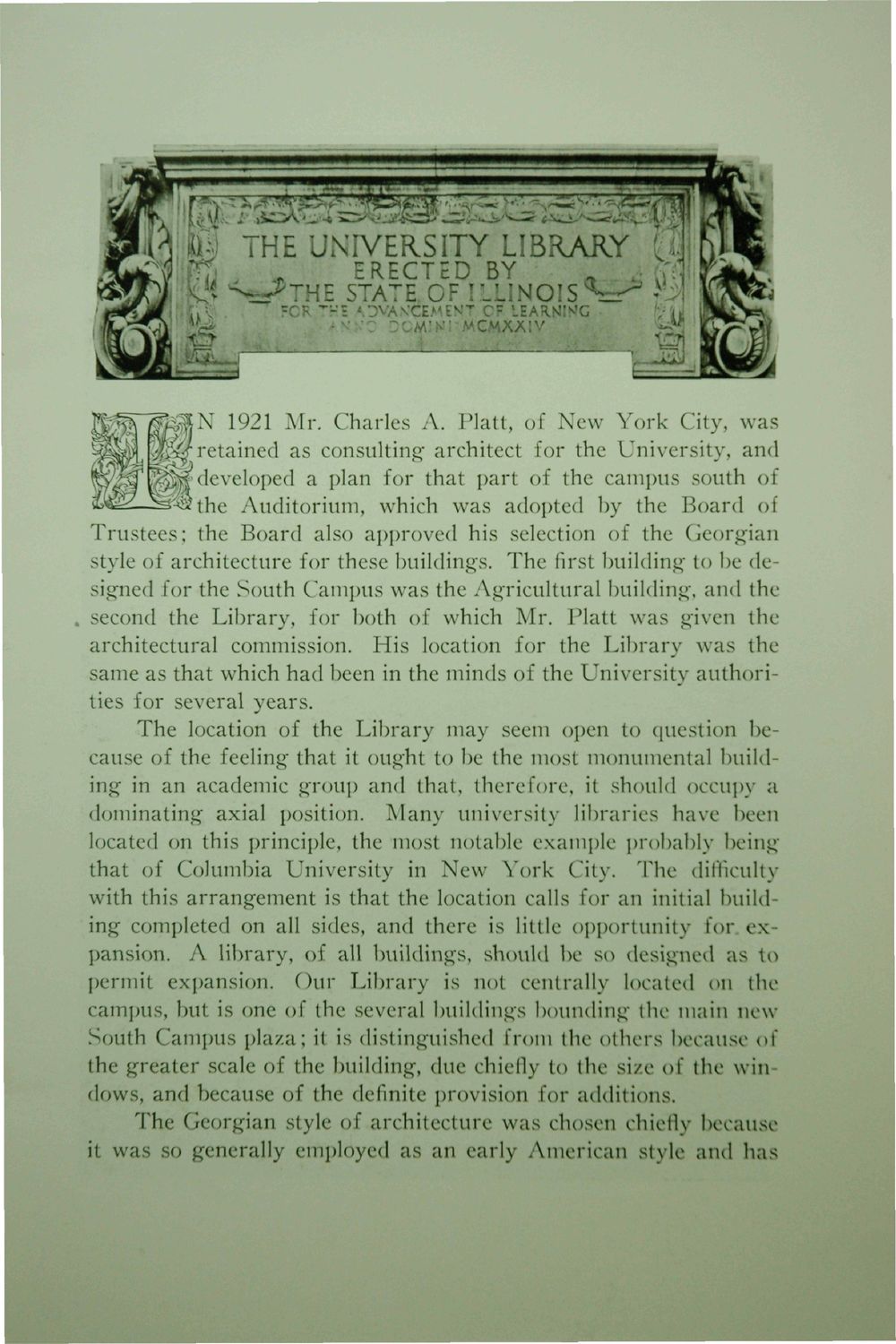| |
| |
Caption: Dedication - Library
This is a reduced-resolution page image for fast online browsing.

EXTRACTED TEXT FROM PAGE:
^ g ^ f N 1921 Mr. Charles A. Piatt, of New York City, was §iyj$ IfSw retained as consulting architect for the University, and wMs ^ M developed a plan for that part of the campus south of &($£2—s3sthe Auditorium, which was adopted by the Board of Trustees; the Board also approved his selection of the Georgian style of architecture for these buildings. The first building to be designed for the South Campus was the Agricultural building, and the . second the Library, for both of which Mr. Piatt was given the architectural commission. His location for the Library was the same as that which had been in the minds of the University authorities for several years. The location of the Library may seem open to question because of the feeling that it ought to be the most monumental building in an academic group and that, therefore, it should occupy a dominating axial position. Many university libraries have been located on this principle, the most notable example probably being that of Columbia University in New York City. The difficulty with this arrangement is that the location calls for an initial building completed on all sides, and there is little opportunity for. expansion. A library, of all buildings, should be so designed as to permit expansion. Our Library is not centrally located on the campus, but is one of the several buildings bounding the main new South Campus plaza; it is distinguished from the others because of the greater scale of the building, due chiefly to the size of the windows, and because of the definite provision for additions. The Georgian style of architecture was chosen chiefly because it was so generally employed as an early American style and has
| |